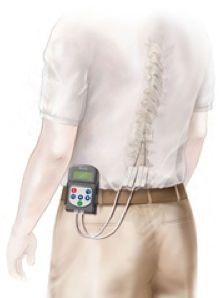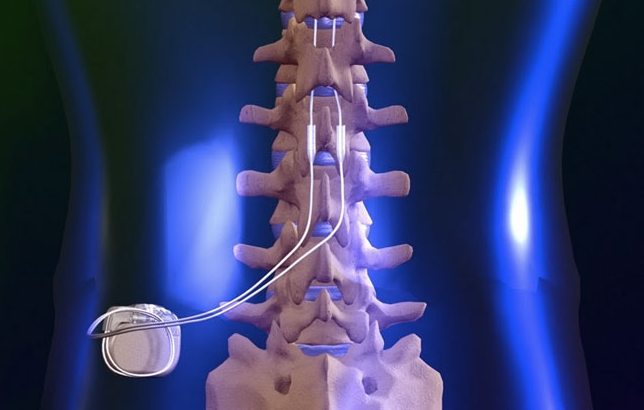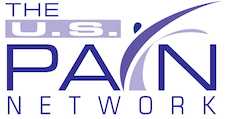What are the Steps involved with Obtaining a Spinal Cord Stimulator?
A spinal cord stimulator, also known as neuromodulation, is a system implanted in the body. Spinal cord stimulation (SCS) is an effective treatment option for chronic pain. Here are the steps involved in obtaining a spinal cord stimulator.

Step 1: Initial Consultation with the Doctor
If you have chronic pain, you may be a candidate for a spinal cord stimulator. The doctor will first take a medical history and review your pain management records. After certain screening tests and a physical examination, the doctor will make his recommendations. You may be a candidate for a spinal cord stimulator if you:
- Have had persistent pain that has not responded to usual therapy for one year.
- Have no exclusionary psychiatric conditions.
- Do not have a dependence on pain medications.
- Do not have a pacemaker, defibrillator, or a medical condition requiring frequent MRI scans.
Step 2: Screening Trial for Spinal Cord Stimulation Effectiveness
Before making a long-term commitment, you can undergo a spinal cord stimulation trial. With this trial, you will have a good idea what the results will be before you  have the SCS system permanently implanted. The temporary system consists of an external stimulator that generates mild electrical pulses and is worn on the waistband, a screening cable, which connects the thin wires place in the epidural space and attached to the stimulator, small leads placed in the epidural space, and a handheld programmer that works like a remote control.
have the SCS system permanently implanted. The temporary system consists of an external stimulator that generates mild electrical pulses and is worn on the waistband, a screening cable, which connects the thin wires place in the epidural space and attached to the stimulator, small leads placed in the epidural space, and a handheld programmer that works like a remote control.
The screening SCS system procedure is done in the doctor’s office on an outpatient basis. After the back is cleaned using an anesthetic, the skin and deeper tissues are numbed using a local anesthetic. A special needle is used to place the leads into the epidural space. The doctor uses x-ray guidance to assure correct position of the leads. Wires run from the leads and attach to the external generator. The total procedure takes around 60 minutes.
Step 3: Learning to use the Temporary SCS System
In the recovery room, a nurse will show you how to use the handheld programmer, how to take care of the skin around the wires, and what activities to avoid during the trial period. You may experience discomfort in the back where the leads were placed, but this usually only last around 12-24 hours.
Step 4: Notifying the Doctor of Results
During the screening trial process, the doctor will wish to know if the neuromodulation implant is:
- Reducing your pain and by how much
- Allowing you to reduce or stop your pain medications
- Improving your sleep
- Improving your ability to perform activities of daily living
Step 5: Evaluating your Response
After the trial is over, the doctor will evaluate your response to spinal cord stimulation. The doctor may adjust the settings and have you wear the unit for a few more days before making a decision on permanent SCS system placement.
Step 6: Removing the Temporary SCS System
After the trial, the doctor will remove the temporary system in the office. This may involve leaving the leads in place until the permanent SCS system procedure is scheduled.
Step 7: The Spinal Cord Stimulator Procedure
 When you arrive at the surgical center, a nurse has you sign a consent form. After you change into a procedure gown, an IV catheter is placed in your arm. The neuromodulation procedure is performed under general anesthesia, so you will be asleep. After making an incision over the spine, the leads are positioned using a hollow needle. To guide the leads into the epidural space, fluoroscopy is used. The stimulator is placed under the skin of the lower abdomen or buttock region. After wires are threaded to connect the generator to the leads, the incisions are closed, and bandages are applied.
When you arrive at the surgical center, a nurse has you sign a consent form. After you change into a procedure gown, an IV catheter is placed in your arm. The neuromodulation procedure is performed under general anesthesia, so you will be asleep. After making an incision over the spine, the leads are positioned using a hollow needle. To guide the leads into the epidural space, fluoroscopy is used. The stimulator is placed under the skin of the lower abdomen or buttock region. After wires are threaded to connect the generator to the leads, the incisions are closed, and bandages are applied.
Step 8: Recovery and Rehabilitation
You will be monitored in the recovery room for 30-60 minutes after the procedure. You are not permitted to drive for a week or so, and cannot bend, twist, or lift for 2 weeks. You can gradually return to usual activities, but should avoid rigorous exercise for around 8 weeks.



